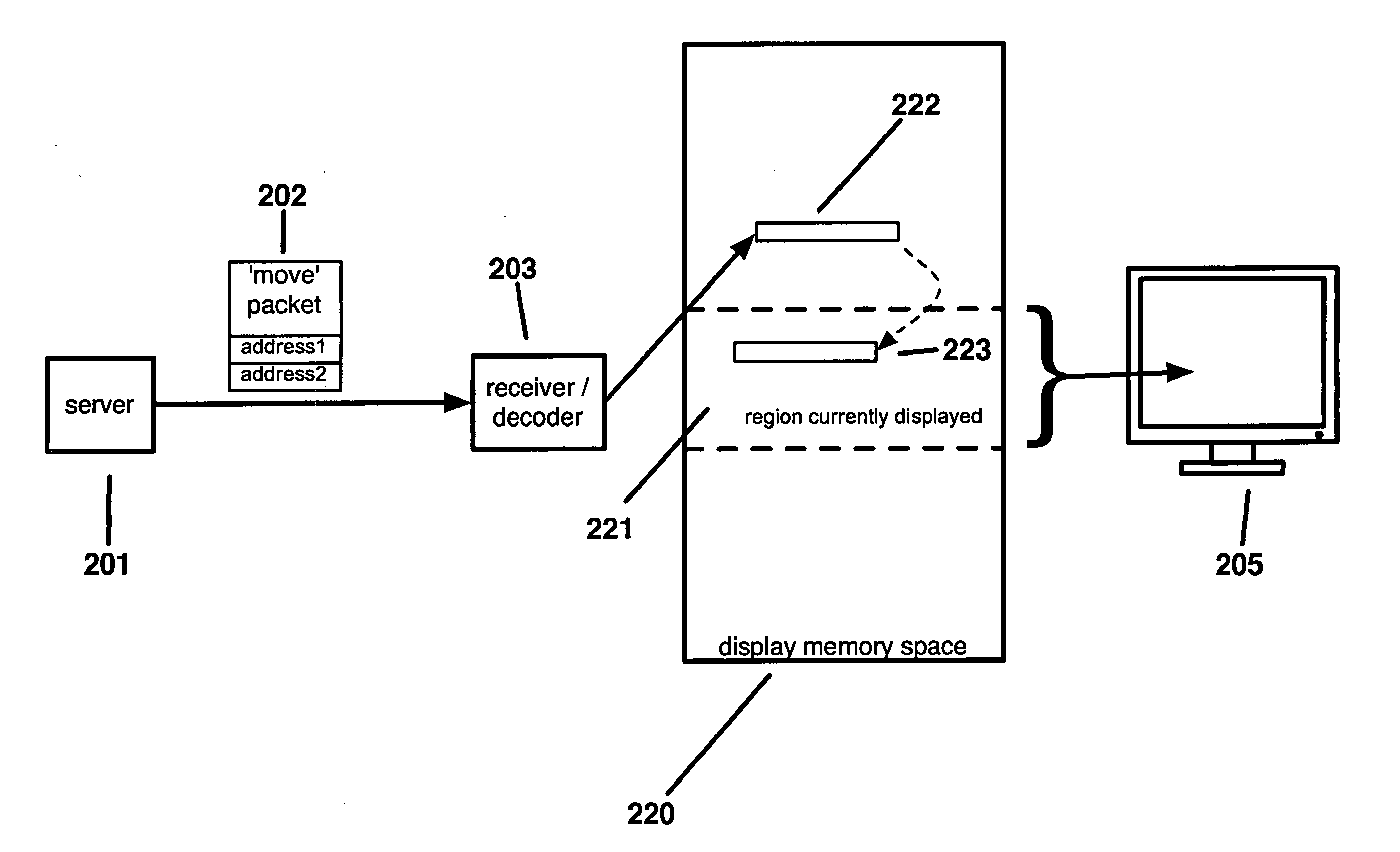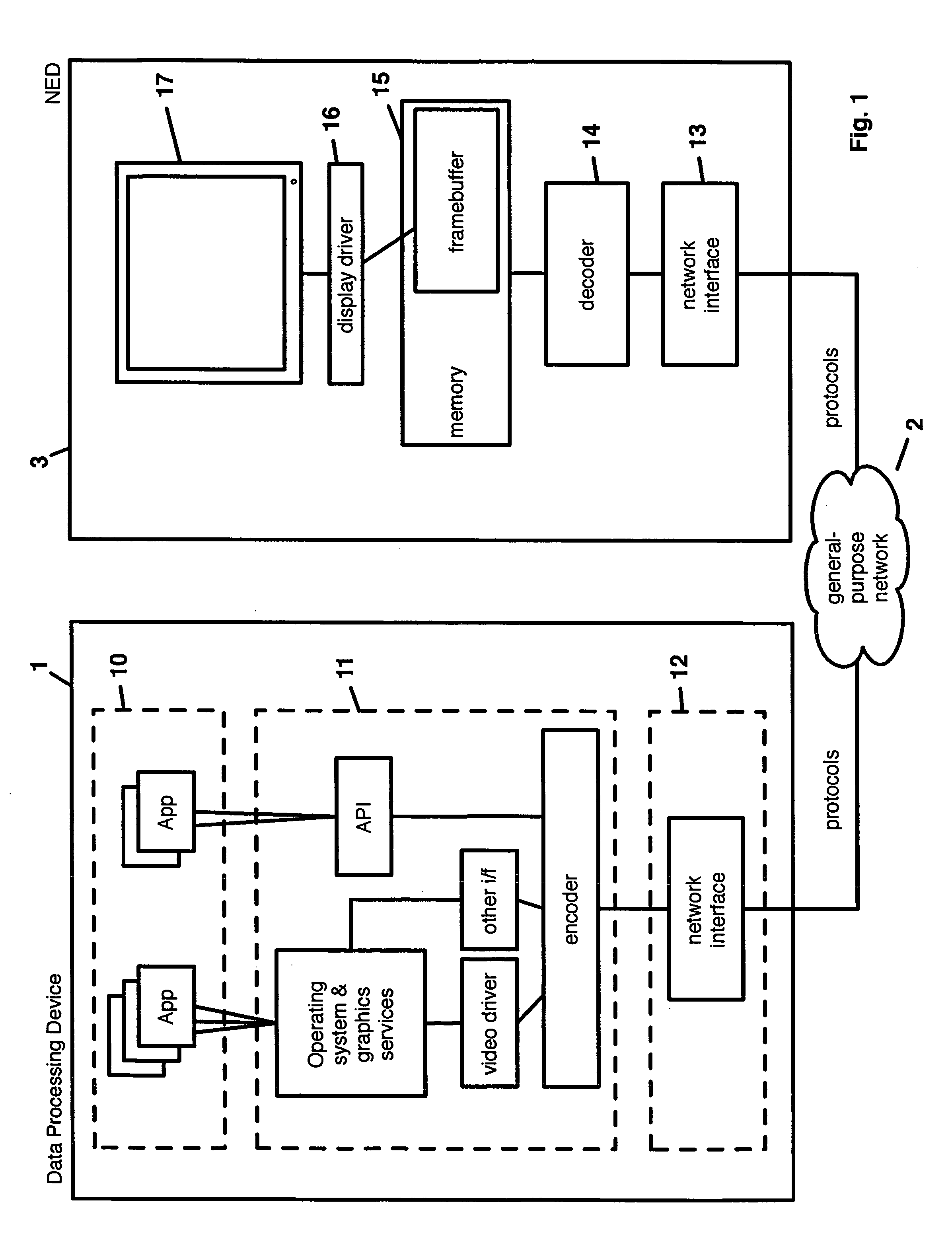Address based graphics protocol
a graphics protocol and address technology, applied in the field of address based graphics protocol, can solve the problems that each computer has to remain fully functional, and achieve the effect of reducing unnecessary repetition of addresses, improving the efficiency of transferring data, and efficient handling
- Summary
- Abstract
- Description
- Claims
- Application Information
AI Technical Summary
Benefits of technology
Problems solved by technology
Method used
Image
Examples
Embodiment Construction
[0057] Referring to FIG. 1, a system in accordance with the present invention requires a data processing device 1 (such as a personal computer, laptop or PDA) from which image data is transferred and a display device 3 connected to the data processing device 1 over a network 2. A display device 3 of this sort will hereinafter be referred to as a network enabled display (NED 3).
[0058]FIG. 1 shows a data processing device 1 running applications 10, software and / or hardware components 11 for converting graphical data and a network interface 12. The NED 3 includes a network interface 13, a decoder 14, a memory 15 and display driver 16, as well as a display screen 17.
[0059] A typical implementation of the present invention in which data is displayed on a display device will now be described with reference to FIG. 1, in terms of the specific steps the data goes through.
[0060] First, an application or group of applications 10 on the data processing device 1 creates some graphical output...
PUM
 Login to View More
Login to View More Abstract
Description
Claims
Application Information
 Login to View More
Login to View More - R&D
- Intellectual Property
- Life Sciences
- Materials
- Tech Scout
- Unparalleled Data Quality
- Higher Quality Content
- 60% Fewer Hallucinations
Browse by: Latest US Patents, China's latest patents, Technical Efficacy Thesaurus, Application Domain, Technology Topic, Popular Technical Reports.
© 2025 PatSnap. All rights reserved.Legal|Privacy policy|Modern Slavery Act Transparency Statement|Sitemap|About US| Contact US: help@patsnap.com



